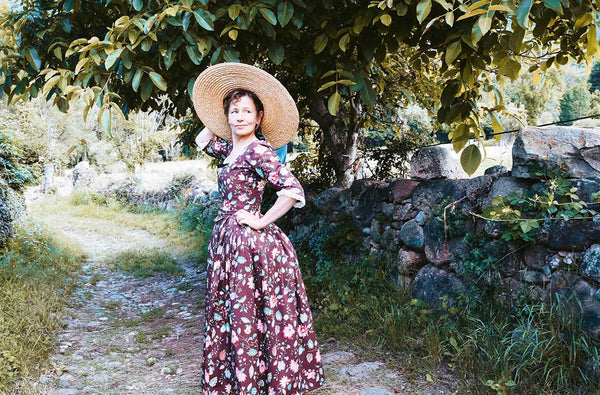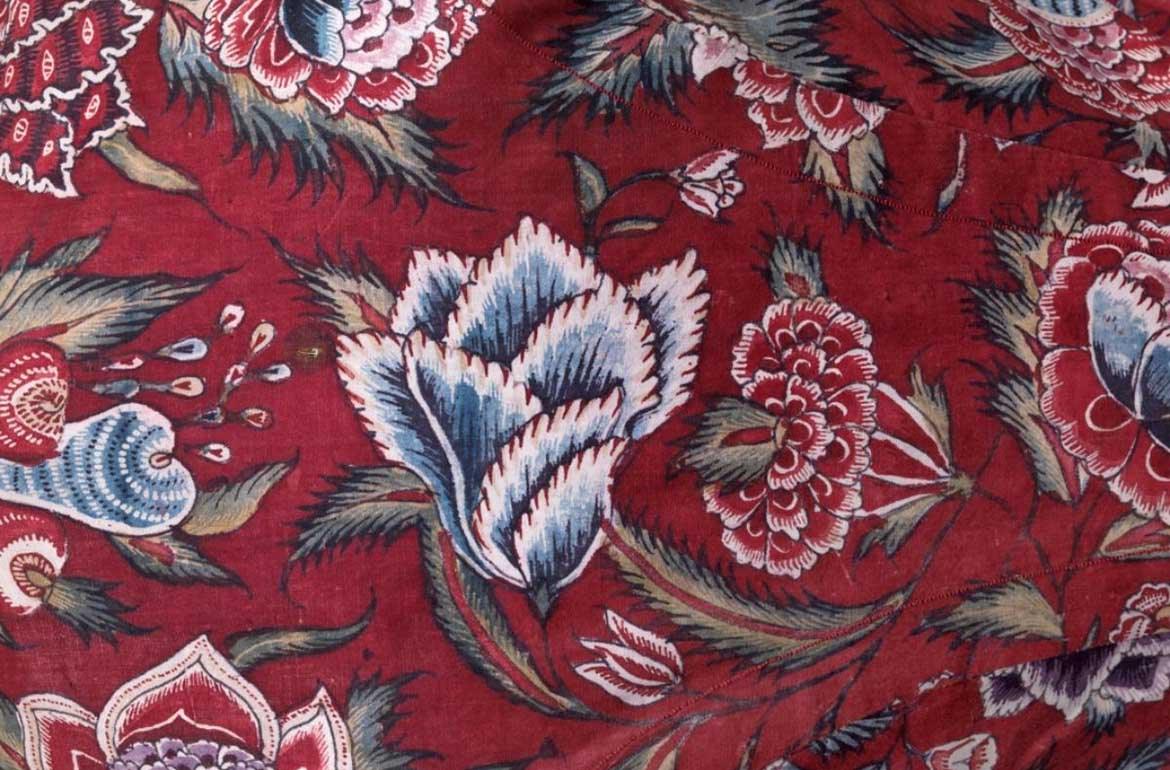Dutch Cottons, also known as Chintz, are brightly colored, floral, hand-painted cotton fabrics that have been cherished and preserved for generations. Originating from India in the 16th century, Chintz quickly became a favorite fabric in Europe due to its beautiful designs. However, for many years, it was a closely guarded secret or only accessible to the elite.
In the 18th century, the fabric became more widely available, and its lightweight, washable, and boldly printed qualities made it a sensation throughout England and Europe. Dutch East India Company merchants transported these cotton fabrics from the Coromandel Coast to the Netherlands' former Voor-India and adapted the original native patterns to suit European tastes and fashion.

Known as "cotton Indians" or "Indiennes," these fabrics were used in Western European interiors, clothing, and costumes, with several elements of traditional Dutch attire made from them. The characteristic feature of the original cotton Indiennes is a shiny layer that made the fabric resemble silk and resist dirt and deposits.
In the 18th century, a new printing method was discovered in Western Europe, allowing the reproduction of the original Indiennes and ending imports from India. The Dutch name for this type of flowery cotton fabric, "sitsen," is derived from the original Indian name, Chitti, which means 'the technique of color projected onto the background.'
Due to increasing demand, numerous fabric printing companies were established in Europe. Until 1750, there were about 80 printing houses and shining facilities in Amsterdam alone. However, by 1816, only one remained, 'Overtooms Welvaren,' which was sold and discontinued the following year. During the 19th century, modern and mechanized printing companies took over production.
Willem Rudolf den Haan is credited with inventing a new printing and processing technique for the "original Indian flower and tree of life" motifs - Palempores, primarily used for interior decoration, historical garments, patchwork, and quilts.

Our Louise, 18th-Century Dress, in Brown Ashbridge Cotton. Get Yours Now! Customs Requests.



